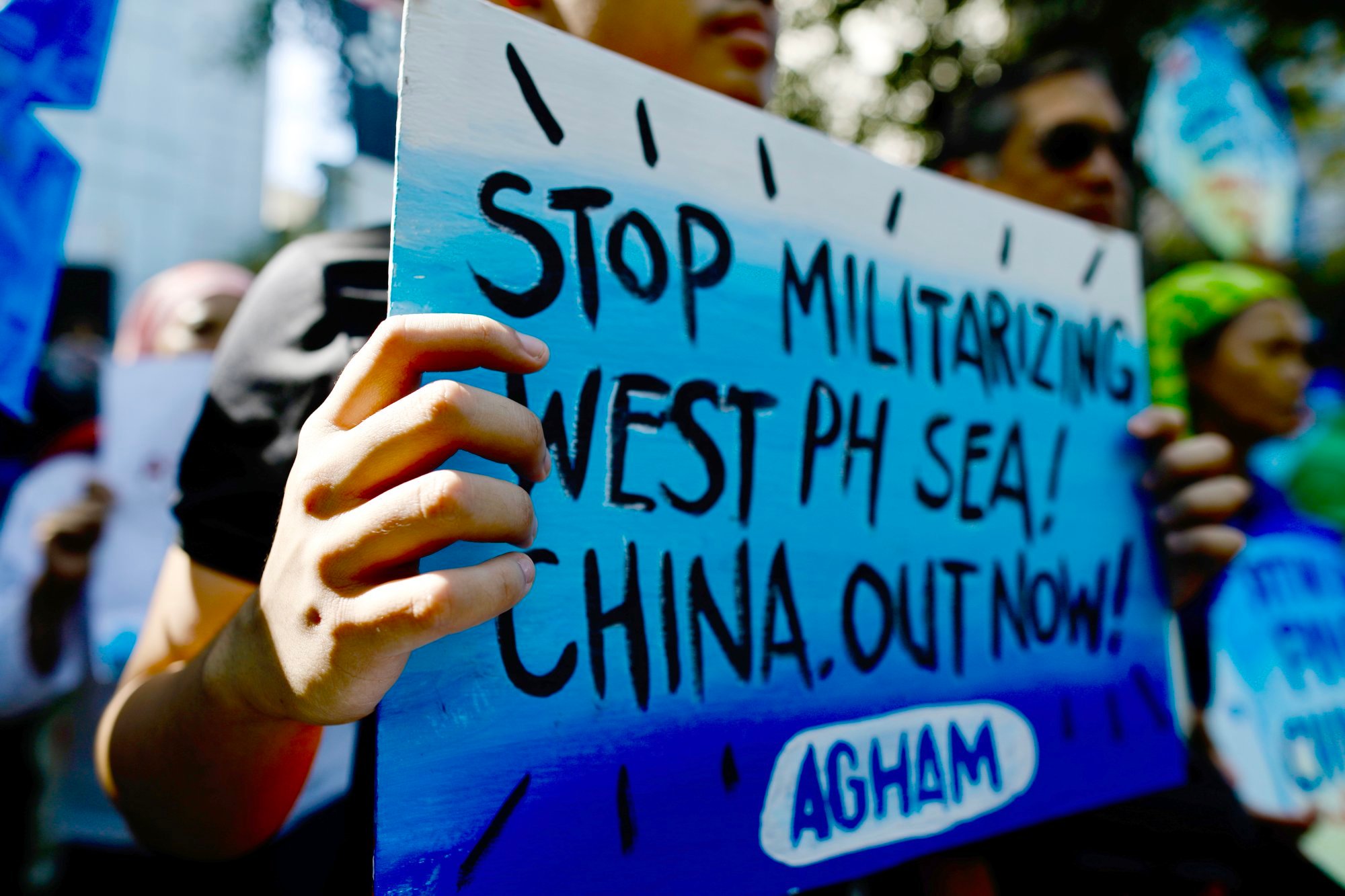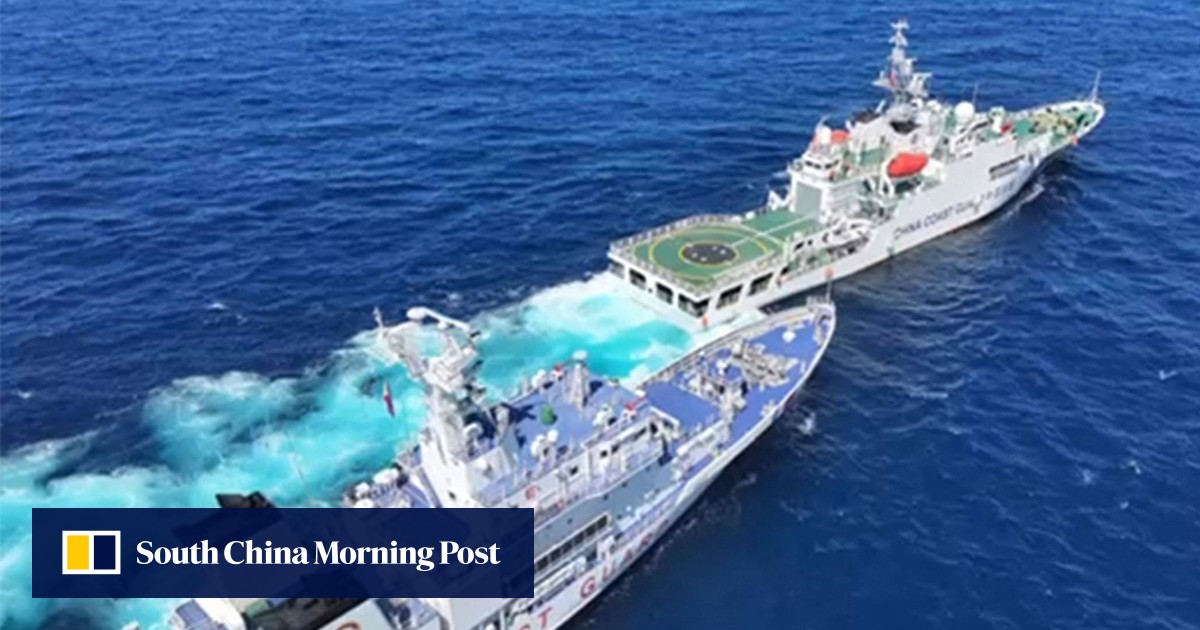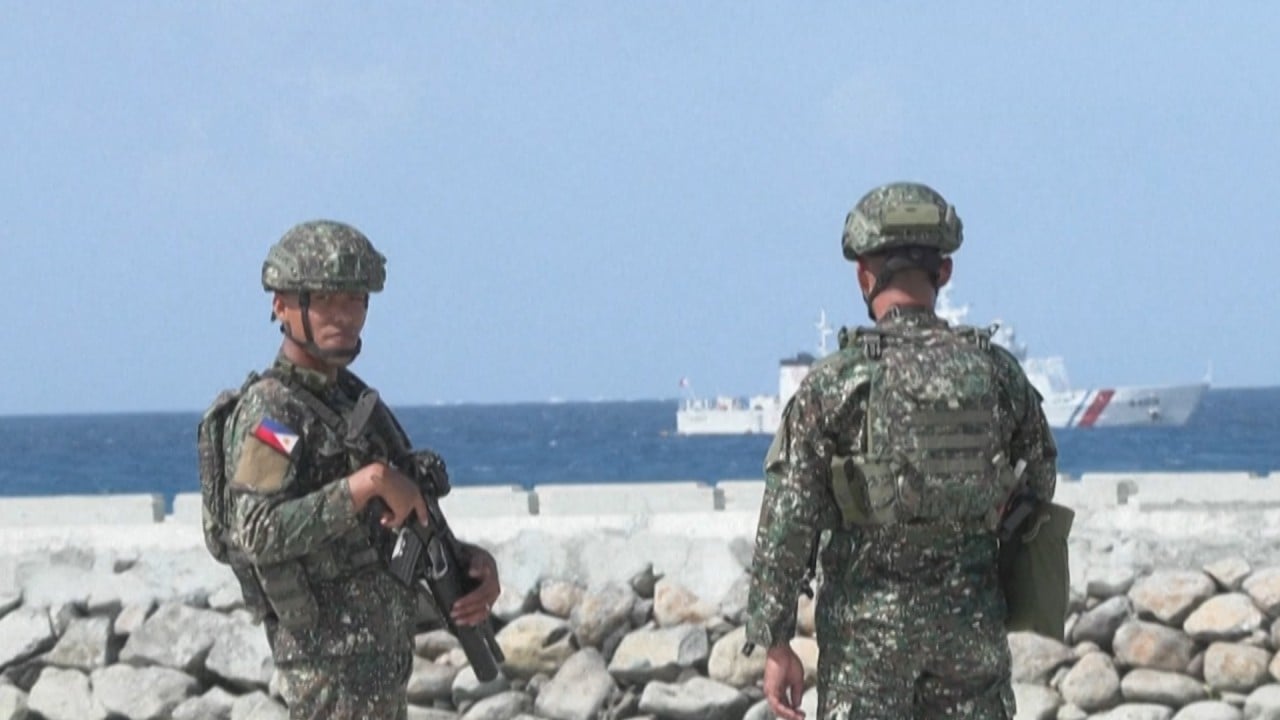He was speaking at the forum sponsored by Stratbase ADR Institute, a Philippine research organisation, and Australian Aid, Canberra’s international aid agency.
Japan plans long-term maritime support for 4 Asean states in South China Sea
Japan plans long-term maritime support for 4 Asean states in South China Sea
Such Chinese transgressions are referred to as grey-zone actions to underscore Beijing’s territorial claims without engaging in open warfare.
He said that PCG had not been told to change its assertive transparency strategy following the January 17 meeting.
The strategy is in contrast to the quiet diplomacy undertaken by former Philippine President Rodrigo Duterte in response to similar Chinese actions in the past. Duterte had justified his measured approach, saying publicising such maritime confrontations would incite China into adopting a more aggressive stance.
It was near the end of Duterte’s term that Manila disclosed it had filed 211 diplomatic notes with China – 153 of them were in 2021 when relations started to sour between the two nations.
Could Duterte’s Mindanao bid ‘distract’ Philippines from South China Sea row?
Could Duterte’s Mindanao bid ‘distract’ Philippines from South China Sea row?
Tarriela said PCG’s strategy, which started last year during President Ferdinand Marcos Jnr’s administration, “enables ordinary citizens to viscerally experience the full measure of [Chinese] grey-zone aggression, which gives the government increased political latitude to take the hard steps required to push back [Beijing]”.
He added that any messaging linked to the strategy is first processed by an information working group comprising PCG, the defence department, the Philippine military, the foreign affairs department, the justice department and the national security council.
“I have to be honest with everyone. Not everything we experience in the West Philippine Sea is openly released to the public,” he divulged. He said the working group first ensures that any released information would not cause panic to or misinterpretation by the public.
“Our efforts to publicise compelling videos and images that truthfully document Chinese illegal actions in the West Philippine Sea have garnered international attention and condemnation. More countries now are expressing their criticism and standing in solidarity with Manila against Beijing’s bullying behaviour and blatant disregard for international law,” Tarriela said.
US Air Force captain Benjamin Goirigolzarri also spoke about PCG’s strategy at the forum, saying it is a tool to tackle “asymmetric challenges” and “shifts the calculus” on grey-zone aggression by “imposing steep international reputational cost to the bad actors”.
Goirigolzarri is a team member of Stanford University’s Gordian Knot Center for National Security Innovation who is involved in Project Myoushu, which seeks to develop more effective tools to counter China’s grey-zone actions.
A free press can offer a “compelling narrative in the face of Chinese misinformation”, according to Goirigolzarri, citing PCG’s strategy.
“Philippine vessels are armed with journalists ready to document run-ins with the Chinese militia to put on display to the world the bullying that Chinese are doing in the South China Sea,” he added.
Victor “Dindo” Manhit, president of the Stratbase ADR Institute, credited the strategy for the rise in public support for Manila’s maritime sovereignty in the West Philippine Sea. The area within the South China Sea includes the Second Thomas Shoal, known by Manila as Ayungin Shoal, where the Philippine military had beached a vessel to serve as an outpost. China lays claim to the shoal and refers to it as Ren’ai Jiao.
To ease tensions in the South China Sea, Philippine foreign affairs undersecretary Theresa Lazaro and China’s assistant foreign minister Nong Rong had agreed to improve maritime communication between the foreign ministries and coast guards of both countries in the maritime area, according to a press statement issued by the Philippine foreign office on January 18.

Both sides also commit to avoid any “escalation of tension”, the statement added.
The Chinese foreign ministry issued a separate statement addressing the same points including to “properly handle maritime emergencies, in particular, the situation on the ground at Ren’ai Jiao”.
Both Goirigolzarri and retired US Air Force colonel Raymond Powell, founder of the security think tank Project Sealight, who also spoke at the forum, have co-authored a paper on maritime security cooperation between countries including the Philippines.
For instance, the US, Japan and Australia have offered to conduct joint patrols in disputed waters; Japan has given grants and loans on friendly terms to buy more coast guard vessels; and France has increased its sharing of intelligence information.
Filipino bishops urge Manila to ‘defend what is ours’ in South China Sea
Filipino bishops urge Manila to ‘defend what is ours’ in South China Sea
“Canada recently began providing state-of-the-art satellite feeds to enable the Philippines to monitor ‘dark’ vessels operating illegally within its exclusive economic zone, while also sending a resident defence attaché to Manila for the first time,” they said.
In maritime law, vessels go “dark” when they turn off or disable their Automatic Identification Systems or transponders to avoid satellite or public monitoring systems but radar systems can still detect them.
Goirigolzarri said at the forum that China’s response to wider cooperation among nations in the South China Sea was to increase its grey zone activities.
Powell highlighted the importance of “institutionalising transparency” and dissemination of information to counter China’s grey-zone tactics in the disputed waters.
“If you turn on the lights in the grey zone, all of a sudden the cockroaches scatter,” he said.


